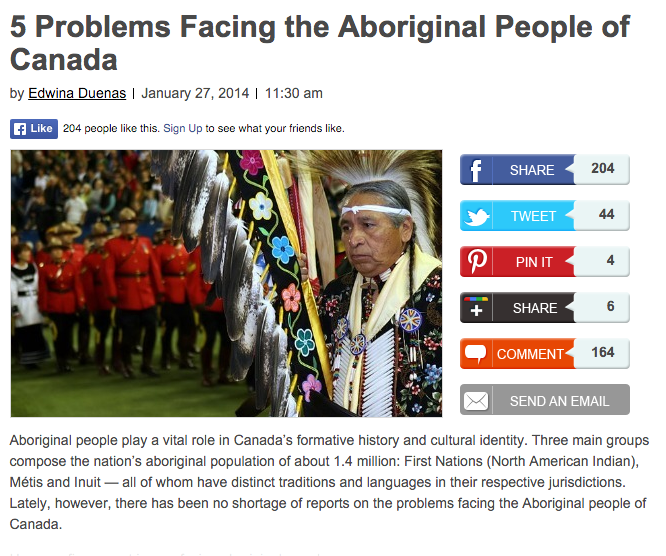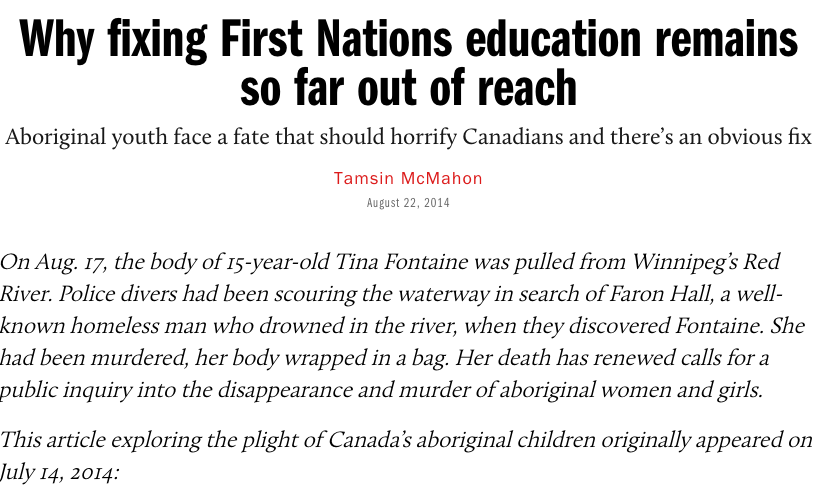
With the recent election in Canada and the shift in power on the national level I thought this article was an important one to share. Native issues in Canada have always struggled to be heard in the national media but this must not continue. The statistic that in the last 60 days 33,000 natives have been victimized in some way is a shocking and should be a wake up call. Not just because it has happened but also because of the lack of traction these issues had in the recent federal election. It would seem that the brutalization of their citizens would be a prime issue that all candidates would take a firm stance on. But surprisingly, even after the release of the findings on Canada’s Truth and Reconciliation Commission the candidates chose to remain silent on these issues. Some of the statistics were shocking to say the least;
an Indigenous child born tomorrow is expected to live seven
fewer years than any other Canadian. He has a 50 per cent
chance of growing up in poverty and better odds of being
jailed than of graduating high school. If born on
Saskatchewan’s Ahtahkakoop Cree Nation, he has a better
chance of being infected with HIV than in some African countries.
Hopefully more Canadians will see this more as our problem than someone else’s problem. We are all part of the same nation and need to take care of everyone equally or we will fail as a whole.
http://www.care2.com/causes/5-problems-facing-the-aboriginal-people-of-canada.html






